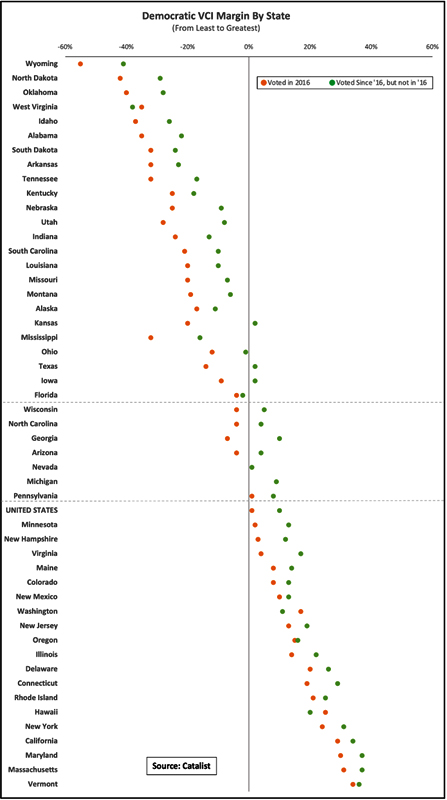

In 2016, Donald Trump shocked the country by eking out narrow wins in Wisconsin (by 0.77%), Michigan (by 0.23%), and Pennsylvania (by 0.72%). He did this by winning over what he himself called "poorly educated voters," primarily men in the Rust Belt who saw their once-comfortable lives disrupted by job losses due to foreign competition, local factories being closed, automation, and other factors. They were angry and Trump seemed to care about them. He didn't, but they didn't know this (and still don't). Besides, Hillary Clinton seemed arrogant and very uninterested in their problems.
Since then, things have changed. Since 2016, Republicans have lost 23 of the 27 major elections in Wisconsin, Michigan, Pennsylvania, Arizona, and Georgia, the key swing states in 2024. When Trump took office, Republicans controlled four of the five governorships and six of the ten Senate seats in those five states. Now they have one governorship (Georgia) and one Senate seat (Wisconsin). What happened?
The 2016 election might go down in history as having had the effect of mobilizing an anti-MAGA coalition. When people saw that someone like Trump could actually win, it energized people who hate him as much as it energized people who love him. In particular, the anti-MAGA group has two important components. First are young people, then 11-17, now of voting age. To them, the Republican Party is Donald Trump and they don't like what they are seeing. They reject MAGA by 20 points. Second are people who voted for Barack Obama but skipped the 2016 election. They are known as the Obama-nones.
Catalist is a (Democratic-aligned) firm that maintains records on 256 million voting-age individuals, with many markers per person to make it possible to make a decent prediction about how someone might vote. For example, a retired gun owner who is a member of the NRA and owns a pickup truck is a possible Republican. A young professor who drives a used Prius and is a member of the Sierra Club is a possible Democrat. Candidates can rent carefully curated lists of voters for whatever city, county, district, or state they are running in. The data also make various statistical analyses possible.
Catalist computes the VCI (Voter Choice Index) for each person. This is the likely partisanship of the person. For a district, state, etc., it is possible to compute the margin by subtracting the number of likely Republicans from the number of likely Democrats. Negative margins are Republican districts, states, etc. and positive ones are Democratic. Since the database goes back to 2008, it is also possible to see how a district, state, etc. is changing over time. The graphic below shows every state, sorted by margin, from most Republican (Wyoming) on top to least Republican (Vermont) at the bottom. The orange dot is for people who voted in 2016. The green dot is for people who did not vote in 2016 but have voted since then. The green dot probably largely represents people who came of voting age from 2017 to 2022 and Obama-nones.

In those states where the green dot is to the right of the orange dot, the state has more Democrats now than it had in 2016. All states except West Virginia, Washington, and Hawaii fall in this category. Also note that the trend also holds in deep red states. Look at Wyoming, North Dakota, Idaho, and Alabama, for example. Even in these states, young people lean more toward the Democrats than their parents. Of course, the parents' and grandparents' generations, when combined, are bigger than the kids' generation, so these red states are still plenty red, but Republicans need to be thinking a bit about the future. The biggest gap on the chart is Kansas. Are you still surprised that the pro-choice side won the abortion referendum there in 2022?
The data suggest that the Democrats do not need to try to convince Trump voters to switch sides. What they need to do is make sure all of the anti-Trump voters get out and vote. This suggests the focus should be less on television ads and much more on registering young voters, making sure they get any ID required to vote, and getting out the vote as soon as early voting starts. (V)